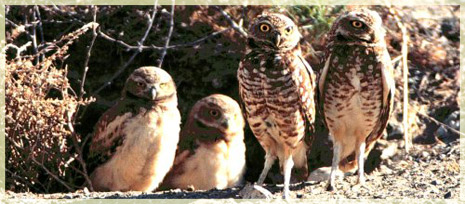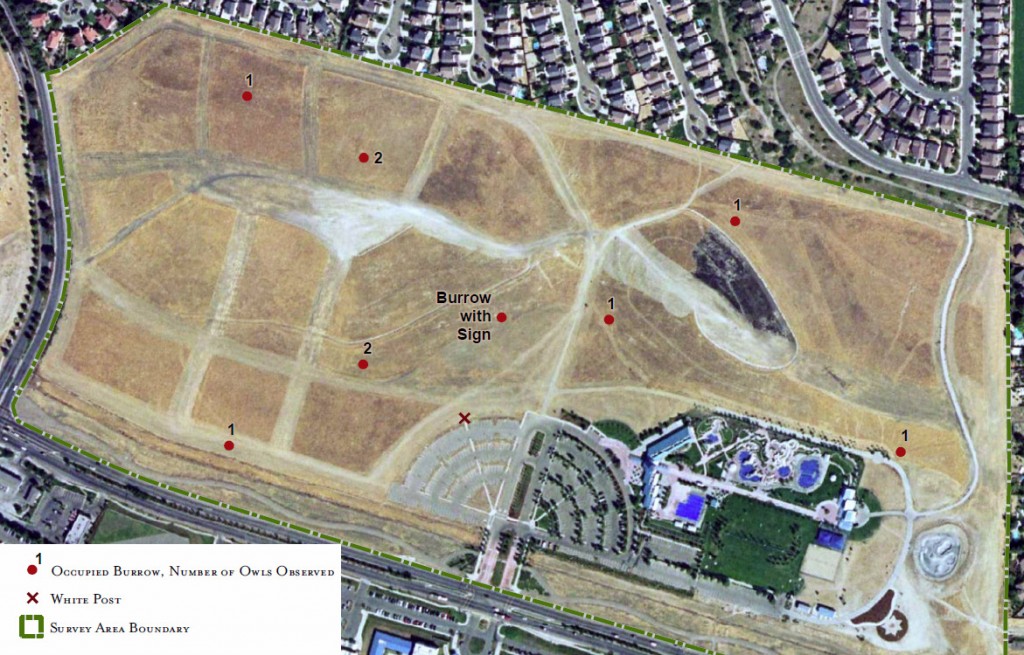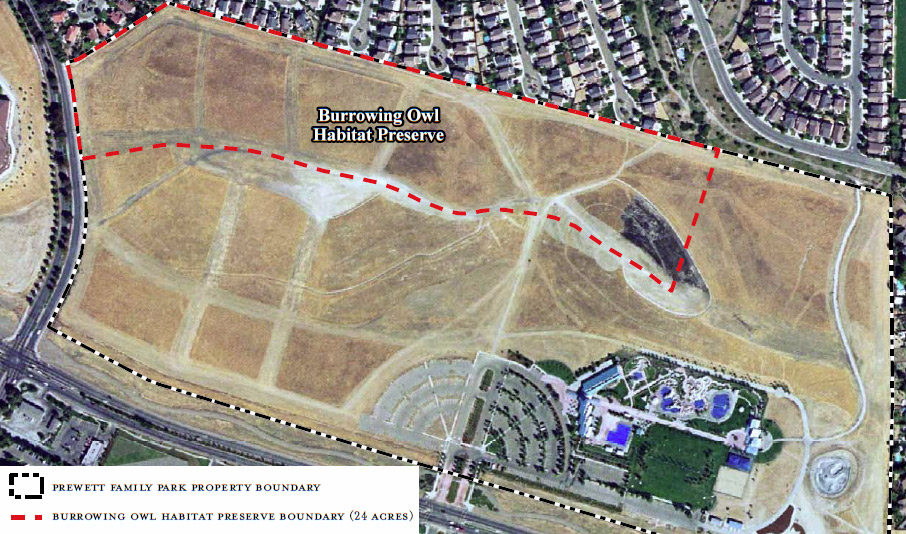
During a recent drive down the urban drag I was tipped off to some new construction by the ‘subtle’ activities of an earthmover doing, well, moving earth around. Apparently the city of Antioch, CA has broken ground on a Community Center adjacent to an approximately 5 year old water park, and a neighboring group of burrowing owls.
My initial thought was to chalk another point in the column of local urbanization and who could blame me as I have steadily watched cities continue the Manifest Destiny mantra and sideline open spaces and native wildlife with expansionism. But, after a little investigation I was amazed to find the city was touting the establishment of a burrowing owl preserve and stated the following on their official website:
“As a part of our environmental impact mitigation for the new community center being built at Prewett park. We have developed 24 acres of preserved habitat for Burrowing Owls. This area will be preserved and maintained in perpetuity to protect these owls.”
Although urbanization is moving forward, perhaps I had jumped the gun in making wild accusations in my preliminary assessment? Well, let’s not be too hasty. Further reading of the project’s Environmental Impact Statement (EIS) and the Burrowing Owl Survey Protocol and Mitigation Guidelines yielded some interesting information. In 2005, biological surveys revealed at least 9 burrowing owls (including 2 pairs) were inhabiting the undeveloped ~70 acres of land in the park’s property. The survey report continued by indicating that the “California Department of Fish and Game typically requires 6.5 acres of mitigation habitat for every pair of owls or unpaired individuals displaced by development.” Subsequent surveys over the next 3 years showed that of the 9 owls, 3 were actually residing in the 5.2 acre community center project zone and were subject to passive relocation…and hence the city’s establishment of the 24 acre preserve.
The reason for mitigation is that burrowing owls are a California species of special concern and a candidate species by the U.S. Fish and Wildlife Service. As per the California Burrowing Owl Consortium, “…nearly 60% of the breeding groups of owls known to have existed during the 1980s had disappeared by the early 1990s.”
Now getting back to the story, a number of aerial maps in the EIS really caught my eye and provoked additional thought. When the owls and occupied burrows are plotted, it becomes quite evident that the population is not clustered in a small region of the ~70 open acres of habitat, but are spread throughout. Which makes sense as the owls need to ensure adequate food is available per individual or pair and thus sustainable.

The second aerial map highlights the burrowing owl preserve and as you can see leaves a substantial portion of habitat unaccounted for. So, an email to the city’s project manager revealed that after taking into consideration the current water park, the construction of the new community center (5.2 acres) and the establishment of the preserve (24.5 acres), approximately 40 plus acres remains undeveloped. Yes, I thought it was a little suspicious as well, which is why I asked about other planned projects. According to the city, future development plans include about 20 acres.

Giving the city the benefit of the doubt (I know it is quite a leap of faith) that the remaining 20 acres will be used to extend the burrowing owl habitat, the fact that the owl population’s Prewett Park range has been reduced by more than half is testament to the reason why over the last 15 years burrowing owls have disappeared from significant portions of their California range.
Additionally, what ramifications will the construction of the 2009 5.2 acre community center have on the resident population and more importantly construction of a further 20 acres in the future? What about a dramatic reduction in available habitat? From the trends that have already been observed, it was a 60% decline in breeding groups. As I see it now, a nature stroll in the not so distant days will involve a concrete path in the shadow of a community center amongst non-native flora with a sign designating a once populated burrowing owl habitat.
This is one situation where I would love to be proved wrong…time will tell.

Just wanted to provide an update…Remaining acres of undeveloped land are not slated for enhancing/expanding burrowing owl preserve in the future
[…] Recent Comments :. Scott on Burrowing Owls and Manifest DestinyScott on The critically endangered, world’s heaviest, flightless parrot returns homeGunnar […]